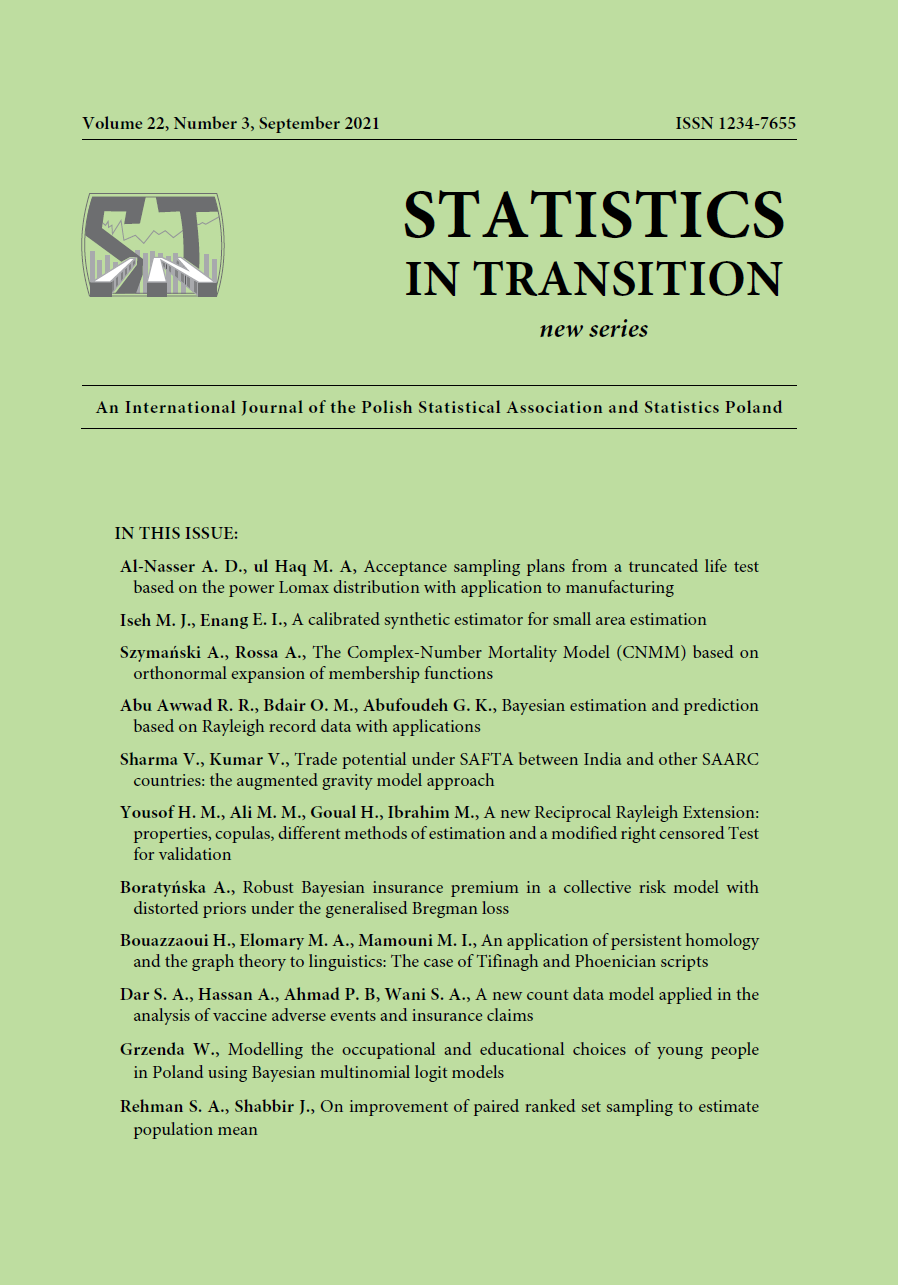ARTICLE
ABSTRACT
Binomial logit models are commonly used in the analysis of the situation of respondents on the labour market. Consequently, in most cases researchers consider two states: of being unemployed and employed or economically inactive and active. This paper focuses on the situation of young people aged 18 to 29 on the labour market in Poland. A major part of the people who comprise the studied group are still in education or combine education with work. Therefore, the participants of the research were divided into the following groups: the employed and not learning, those combining education with work, the unemployed, learners/students only, and those economically inactive and not at school. The model allowing an analysis which includes both the most common division into working and nonworking persons as well as the division proposed in this study is a nested logit model. This model has a hierarchical structure and is a special case of a multinomial logit model. In this paper, all models were estimated within the Bayesian approach. The findings show that continuing education by young people may result from their problems with finding a job; moreover, combining work with education is not the preferred form of professional activity. In addition, the study examines the inequalities observed on the Polish labour market.
KEYWORDS
young people, labour market, education, multinomial logit model, Bayesian approach
REFERENCES
Allison, P. D., (2009). Logistic Regression Using the SAS®. Theory and Application. 8th ed. Cary, NC: SAS Institute Inc.
Anderson, S. P., De Palma, A. and Thisse, J. F., (1992). Discrete choice theory of product differentiation. Massachusetts: The MIT Press.
Becker, G. S., (1991). A Treatise on the Family. Cambridge: Harvard University Press.
Becker, G. S., (2010). The Economics of Discrimination. USA: University of Chicago Press.
Bieszk-Stolorz, B., Markowicz, I., (2013). Men’s and Women’s Economic Activity in Poland. Acta Universitatis Lodziensis. Folia Oeconomica, 285, pp. 221–227.
Brooks, R., (2006). Learning and work in the lives of young adults. International Journal of Lifelong Education, 25(3), pp. 271–289.
Cameron, A. C., Trivedi, P. K., (2005). Microeconometrics: methods and applications. Cambridge: Cambridge University Press.
Castellano, R., Rocca, A., (2017). The dynamic of the gender gap in the European labour market in the years of economic crisis. Quality & Quantity, 51(3), pp. 1337–1357.
Cheng, S., Long, J. S., (2007). Testing for IIA in the multinomial logit model. Sociological Methods & Research, 35(4), pp. 583–600.
Chłoń-Domińczak, A. and Strawiński, P., (2013). Wchodzenie osób młodych na rynek pracy w Polsce. In Proceedings of the 9th Congress of Polish Economists, pp. 28–29.
Cramer, J. S., 2003. Logit Models from Economics and Other Fields. Cambridge: Cambridge University Press.
Central Statistical Office of Poland, (2016a). Aktywność ekonomiczna ludności Polski w latach 2013 – 2015. Warszawa: CSO.
Central Statistical Office of Poland, (2016b). Monitoring Rynku Pracy, Kwartalna informacja o rynku pracy. Warszawa: CSO.
Dale, K., (2009). Household skills and low wages. Journal of Population Economics, 22(4), pp. 1025–1038.
Davidescu, A. A. M., Roman, M., Strat, V. A. and Mosora, M., (2019). Regional sustainability, individual expectations and work motivation: A multilevel analysis. Sustainability, 11(12), 3331.
de Dios Jiménez, J., Salas-Velasco, M., (2000). Modeling educational choices. A binomial logit model applied to the demand for higher education. Higher Education, 40(3), pp. 293–311.
Gallie, D., Paugam, S. eds., (2000). Welfare regimes and the experience of unemployment in Europe. Oxford: OUP Oxford.
Gamerman, D., (1997). Sampling from the posterior distribution in generalized linear mixed models. Statistics and Computing, 7(1), pp. 57–68.
Gelman, A., Carlin, J. B., Stern, H. S. and Rubin, D. B., (2000). Bayesian Data Analysis. London: Chapman & Hall/CRC.
Grzenda, W., (2012). Badanie determinant pozostawania bez pracy osób młodych z wykorzystaniem semiparametrycznego modelu Coxa. Przegląd Statystyczny, 59(1), pp. 123–139.
Grzenda, W., (2019). Modelowanie karier zawodowej i rodzinnej z wykorzystaniem podejścia bayesowskiego. Warszawa: Wydawnictwo Naukowe PWN.
Hausman, J., McFadden, D., (1984). Specification tests for the multinomial logit model. Econometrica, 52, pp. 1219–1240.
Hsiao, C., Small, K., (1985). Multinomial logit specification tests. International economic review, 26(3), pp. 619–627.
Jasiński, M., Bożykowski, M., Chłoń-Domińczak, A., Zając, T. and Żółtak, M., (2017). Who gets a job after graduation? Factors affecting the early career employment chances of higher education graduates in Poland. Edukacja Quarterly, 143(4).
Kołaczek, B., (2005). Podstawowe uwarunkowania społeczne dostępu młodzieży do kształcenia. Polityka Społeczna, 1.
Lahiri, K., Gao, J., (2002). Bayesian Analysis of Nested Logit Model by Markov Chain Monte Carlo. Journal of Econometrics, 11, pp. 103–133.
McFadden, D., (1978). Modelling the Choice of Residential Location. In: A. Karlqvist, L. Lundqvist, F. Snickars, and J. Weibull, eds. Spatial Interaction Theory and Planning Models. Amsterdam: North-Holland, pp. 75–96.
Michaud, P. C., Tatsiramos, K., (2011). Fertility and female employment dynamics in Europe: the effect of using alternative econometric modeling assumptions. Journal of Applied Econometrics, 26(4), pp. 641–668.
Ministerstwo Rodziny, Pracy i Polityki Społecznej, Departament Rynku Pracy, (2018). Sytuacja na rynku pracy osób młodych w 2017 roku, Warszawa: MRPiPS.
Robert, C. P., Casella, G., (2004). Monte Carlo Statistical Methods. 2nd ed. New York: Springer.
Rossi, P. E., Allenby, G. M. and McCulloch, R., (2005). Bayesian Statistics and Marketing. Chichester. UK: John Wiley & Sons.
Stanisz, A., (2016). Modele regresji logistycznej: zastosowania w medycynie, naukach przyrodniczych i społecznych, Kraków: Wydawnictwo StatSoft Polska.
Train, K. E., (2009). Discrete Choice Methods with Simulation. 2nd ed. Cambridge: Cambridge University Press.
